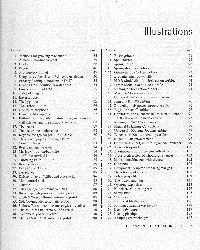Difference between revisions of "Censorship"
| Line 9: | Line 9: | ||
*Visual Media: This refers to content that involves motion art or photographs. Examples are comics, television shows, and movies. | *Visual Media: This refers to content that involves motion art or photographs. Examples are comics, television shows, and movies. | ||
| − | Censorship can take place in two different ways: | + | Censorship can take place in two different ways: replacement or removal of content. |
===Replacement=== | ===Replacement=== | ||
| − | This type of censorship occurs when a part of a work is edited to | + | This type of censorship occurs when a part of a work is edited to replace the controversial expression. For instance, profanity on television is replaced with an alternative audio clip or silence. On other occasions, nudity is blurred. |
| − | + | ||
| − | + | ||
===Removal=== | ===Removal=== | ||
| − | This type of censorship occurs when the work in question is removed from public access. | + | This type of censorship occurs when the work in question is completely removed from public access. In the context of text censorship, this may involve banning a book in a country. In the visual media, a scene of a movie may be cut in the televised version. |
| − | + | ||
| − | + | ||
== Primary Motivation for Censorship == | == Primary Motivation for Censorship == | ||
Revision as of 22:37, 27 November 2011
Censorship is the suppression of speech or deletion of communicative material which may be considered objectionable, harmful, sensitive, or inconvenient to a particular organization as determined by a censor. In the present day United States, several issues of ethics surrounding censorship have been raised, including the censorship of pornography.
Contents
Types of Censorship
There are two broad forms of censorship:
- Text: This refers to the censorship of material found in the written media such as newspapers, magazines, published articles and books.
- Visual Media: This refers to content that involves motion art or photographs. Examples are comics, television shows, and movies.
Censorship can take place in two different ways: replacement or removal of content.
Replacement
This type of censorship occurs when a part of a work is edited to replace the controversial expression. For instance, profanity on television is replaced with an alternative audio clip or silence. On other occasions, nudity is blurred.
Removal
This type of censorship occurs when the work in question is completely removed from public access. In the context of text censorship, this may involve banning a book in a country. In the visual media, a scene of a movie may be cut in the televised version.
Primary Motivation for Censorship
"The motivation for censorship is often disapproval of the content or worry about its effects on "public morality" (Censorship 2008 pp. 577).
Other motivations for censorship, however, may include the moral disapproval of what individuals may do with the information gained from accessing an expression. For example, information on bomb making is, in itself, non threatening, however, what individuals may choose to do with this information can be very threatening.
Inherently Harmful Access
"This view holds that accessing some content is simply inherently bad" (Censorship 2008 pp. 580).
See also: Kay Mathiesen.
Censorship and Pornography
See also: Censorship and Pornography.
Instrumentally Harmful Access
Content is censored for the concern that harm to another may be a consequence to unrestricted access to certain information.
See also: Kay Mathiesen.
See Also
- Censorship and Pornography
- Information Ethics
- Internet Censorship in Hong Kong
- Kay Mathiesen
- Phototruth
References
- Wikipedia - Censorship
- "Censorship and Access to Expression" The Handbook of Information and Computer Ethics, 2008. https://ctools.umich.edu/access/content/attachment/aaaaaee7-1694-481e-95b6-090bdec54ec2/Assignments/227d63b0-669c-4a3e-9399-23a8f97ad737/MediaWiki%20Writing%20Assignment.pdf
